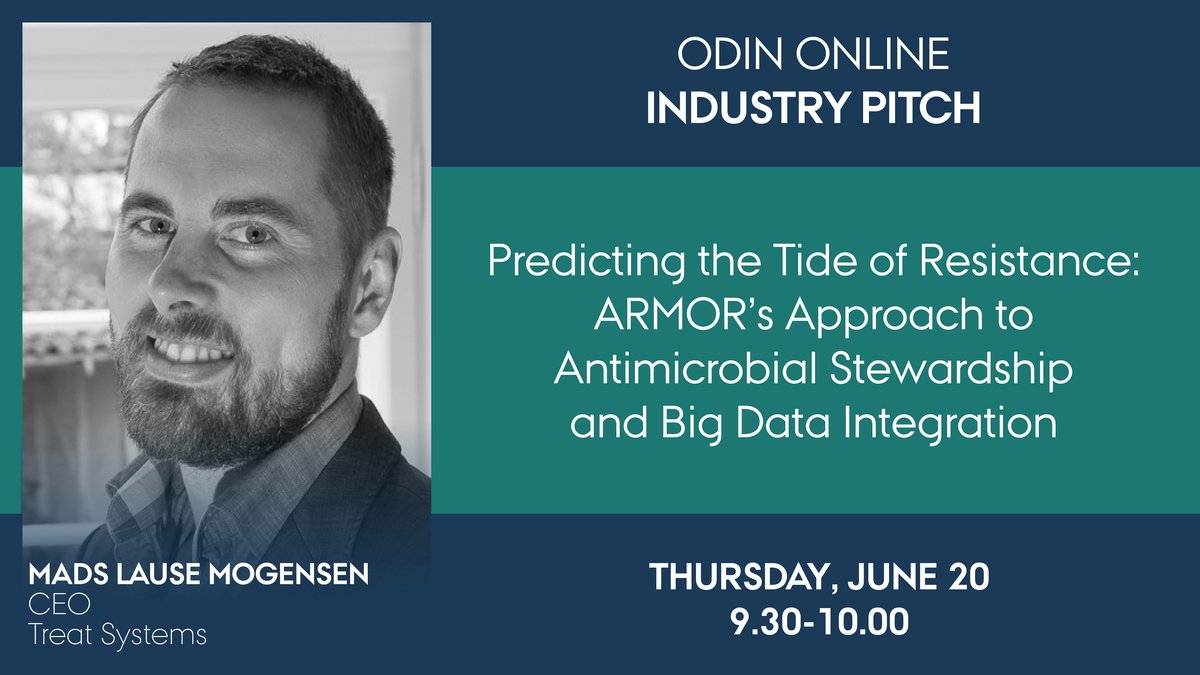ODIN online industry pitch | MADS LAUSE MOGENSEN / Treat Systems
If you're interested in antibiotic resistance, you should join this pitch when Mads Lause Mogensen from Treat Systems pitches an idea for an ODIN project.
Info about event
Time
Location
online
Organizer
ARMOR - Antimicrobial Resistance Modeling and Outcome Research
According to WHO, antimicrobial resistance is one of the greatest health threats of the 21st century. The increasing resistance increases the cost of treating patients globally, while limiting the treatment options of infections. This results in increasing mortality among infectious patients, which is why multidrug-resistant bacteria are expected to cause more deaths than cancer by 2050. The medical and societal costs attributable to antibiotic resistance are significant and will escalate in the future if efforts are not improved. Unfortunately, the consumption of antibiotics - particularly the broad-spectrum types - is steadily increasing, despite it is generally accepted that the consumption of antimicrobials is driving the resistance. This hypothesis is supported by data linking the consumption of antimicrobials in a country to the antimicrobial resistance found in the country e.g. Danish Programme for surveillance of antimicrobial consumption and resistance in bacteria from food animals, food and humans (DANMAP).
For most groups of pathogens, such as streptococci and staphylococci, these maps give a consistent picture of the relation between microbial resistance and antimicrobial consumption. Unfortunately, this type of data does not have the resolution to provide answers to how the use of a given antimicrobial affects the future resistance of a given pathogen to either that or related antimicrobials.
The development a meaningful prediction of antimicrobial resistance requires modeling the spread of antimicrobial resistance between three reservoirs:
- the patient, where the resistance is generated due to the consumption of antimicrobials,
- the hospital, where high levels of resistance are usually found, due to contamination from treated infectious patients, and
- the community, into which infectious patients carry their resistant pathogens.
A model of the effects of prior antimicrobial therapy on microbial resistance has been constructed, thus providing a quantitative model for the generation of resistance in the patient reservoir (1). The quantity of data available was only sufficient to give significant answers for a few classes of commonly used antimicrobials for a few groups of the most common pathogens, thus illustrating the need for “big data”. Such “big data” for all three reservoirs can be collected by combining historical data from microbiological databases in major hospitals with data on the patient’s prior antimicrobial treatment history. The model of the effect of prior antimicrobial therapy can be included in a decision support tool like TREAT-Essential which also includes a database structure suitable for collection and processing of the data. The existing version of TREAT-Essential provides recommendation for the personalized and rational choice of antibiotics and diagnostic workup of infectious patients.
The value of quantitative data on the development of resistance would be twofold:
- it would allow a rational balancing of the use of certain types of typically broad-spectrum antimicrobials against the risk of giving the patient ineffective antimicrobial therapy, thus potentially reducing the rate of development of resistance and
- it would allow producers of antimicrobials to estimate the useful lifetime of antimicrobials under different patterns of use and potentially to preserve low levels of these antimicrobials of these antimicrobials until they become drugs of last resort.
Reference: Line Rugholm Sanden, Steps Towards Personalised Antibiograms: predicting antimicrobial susceptibility. Det Sundhedsvidenskabelige Fakultet Aalborg University AAU
